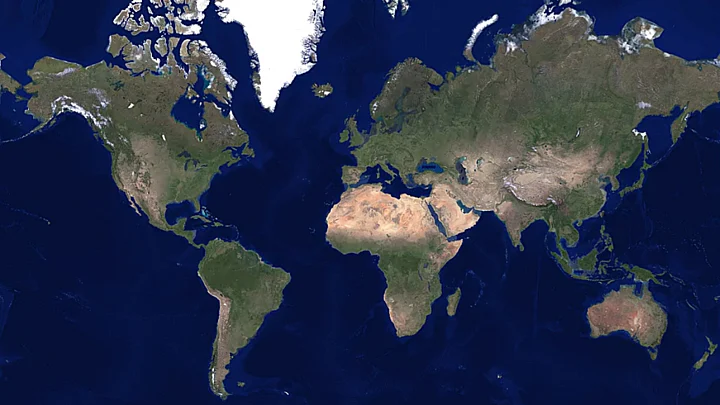1984 to 2016. We’ve witnessed the most incredible changes in the last three decades. From Rajiv Gandhi to Narendra Modi, Rishi Kapoor to Ranbir Kapoor, from Captain Vyom to TVF’s Permanent Roommates, and from Maruti 800 to Lamborghinis whizzing past us.
While we’ve been busy with our “development” agenda, we’ve quietly been delivering a death blow to the most critical aspect of our sustenance – the environment. And nothing speaks louder than pictures, not even angry Arnab.
The latest timelapses compiled by Google Earth in association with some of the most incredible satellite imagery over the last 32 years, shows the drastic changes to our planet. In one word, it’s DEVASTATING.
Google Earth Engine combined more than 5 million satellite images to create 33 images for the entire planet, one for each year. For those who aren’t convinced that our impact on this planet is significant, take a look at what we’ve done:
The Changing Face of India
India’s economy has grown rapidly in the last four decades. Cities are booming and eating away at green spaces.
Around 420 million people live in urban areas now, and by 2050 that number is expected to rise to 800 million. The country’s largest cities are welcoming more and more people by the day.
Expanding Capital – The Growth of New Delhi
New Delhi has lost a lot of its green areas. At the same time, settlements in the NCR region are also rapidly expanding.
Razing the Hills in Pune
All the hills surrounding Pune have been razed and replaced by the rapidly growing city.
Drought-Struck Jim Corbett National Park
For years, Jim Corbett National Park has been suffering from drought. Rangers have been forced to bring water in so the animals can survive. The Google Earth timelapse allows you to see the effects of the drought on the park.
A Global Perspective
Development around the world is taking its toll on the environment.
Forests are being cleared, and deserts are expanding as large bodies of water dry up. And given the rate at which the human population is growing, it’s probably just going to get worse.
Back in the 1980’s, there were around 4.5 billion people on the planet – now, there are around 7.4 billion. By 2050, we’ll have to share this planet with an estimated 9.7 billion people.
Deforestation in Indonesia
Indonesia has some of the densest and most diverse forests in the world, but growing cities and palm oil plantations have torn down the trees and displaced many animals, such as the orangutan.
Melting Antarctica
The massive ice sheets and glaciers of Antarctica are rapidly melting, forcing global sea levels to rise. Rising seas could bring devastation to Indian cities like Mumbai and Chennai.
Arctic Crisis
On the other icy pole, rapid ice melt is also a concern. This is the archipelago of Svalbard, in Norway. Scientists are deeply concerned because the Arctic recorded temperatures more than 20 degrees warmer than normal at this time of year.
The Arctic ice is one of the key safeguards that prevents the Earth from warming too quickly. Once it’s gone, climate change is expected to get much, much worse.
The Blue Planet
Looking at these images, it can be hard to feel any hope for the human race. But let’s not forget that there is still a lot of beauty in this world, and with a little more mindfulness, we can do something to save what is left.
Now it’s your turn to explore the planet with Google Earth timelapse. You can take a look here.
